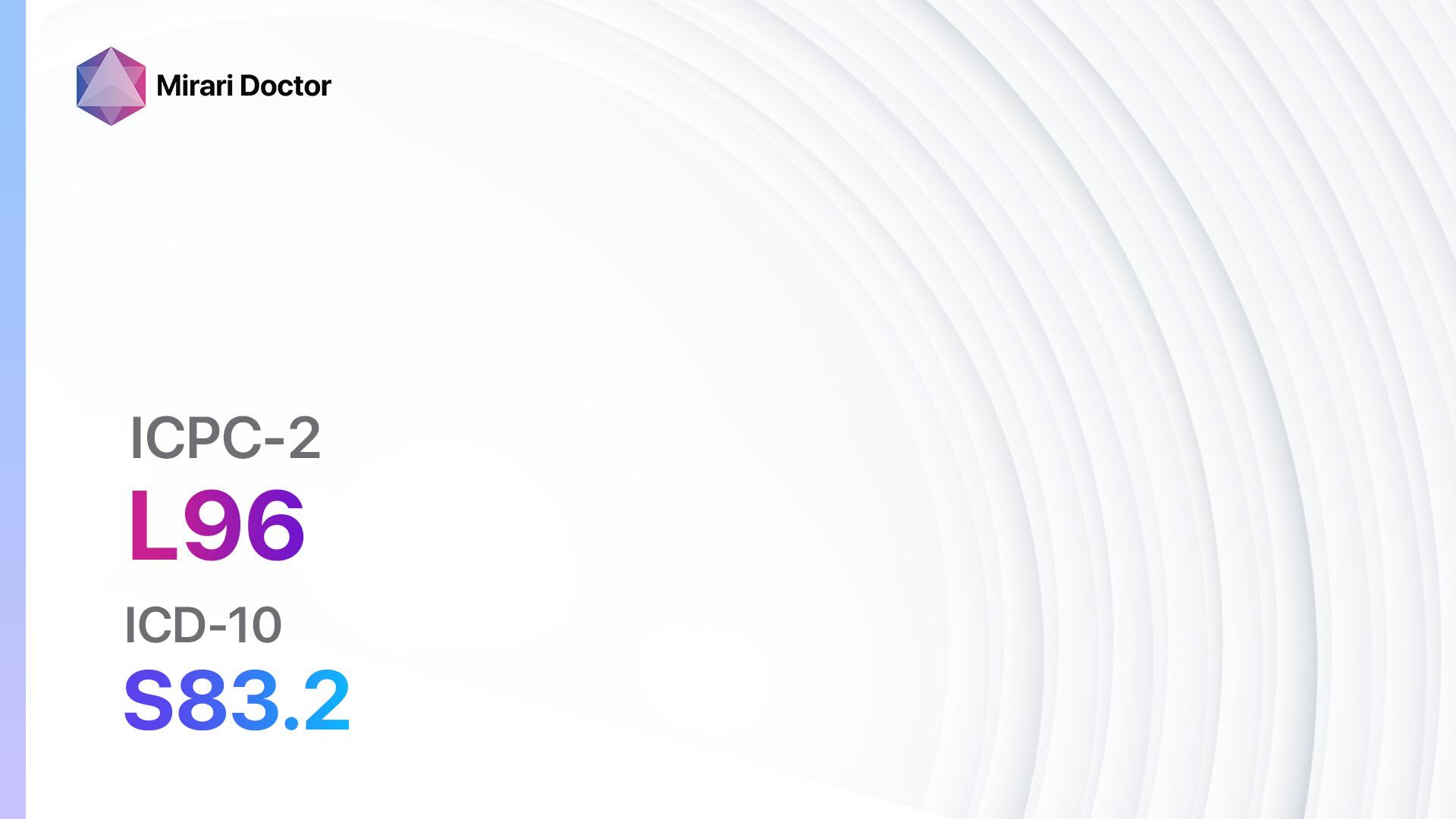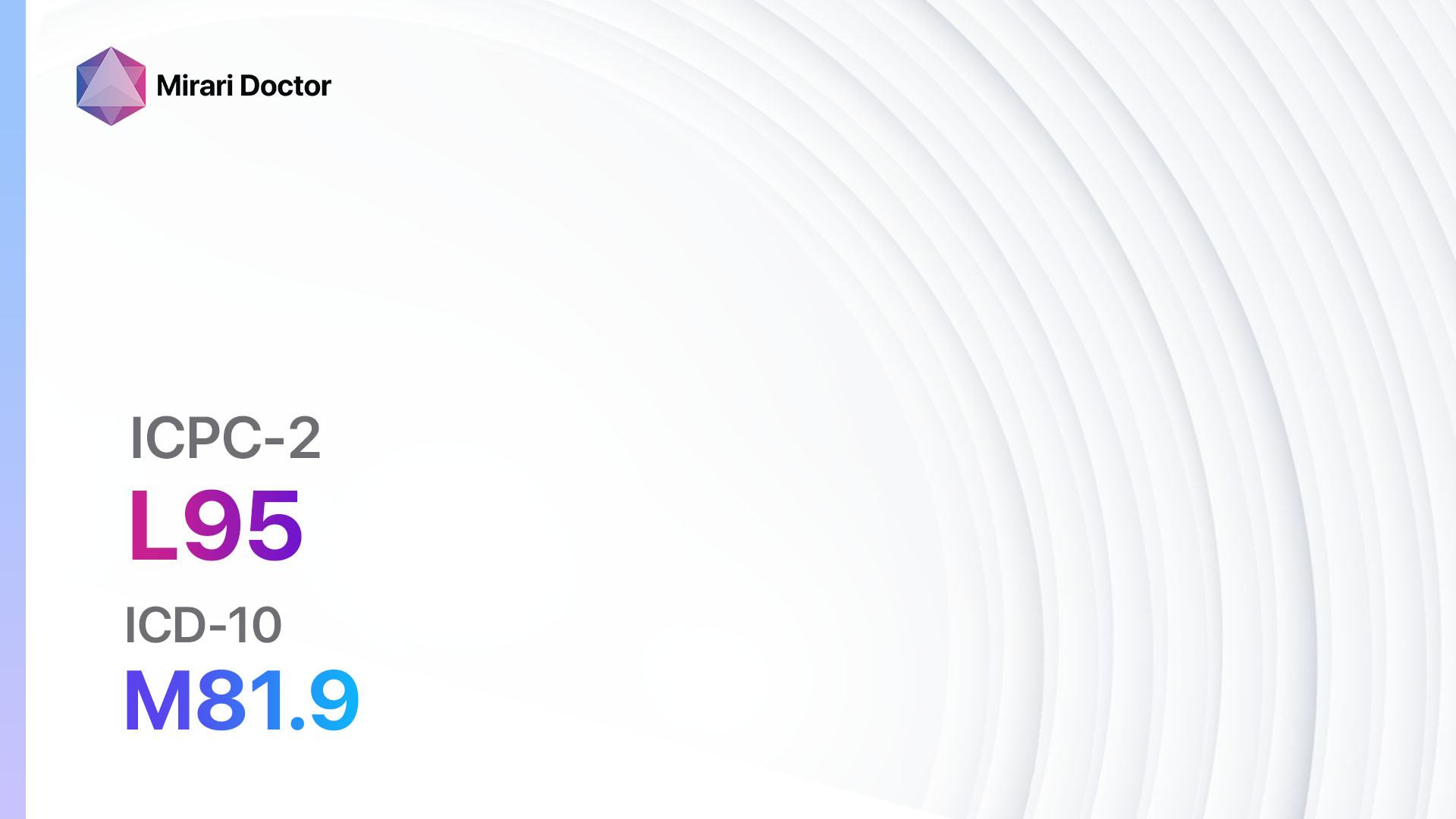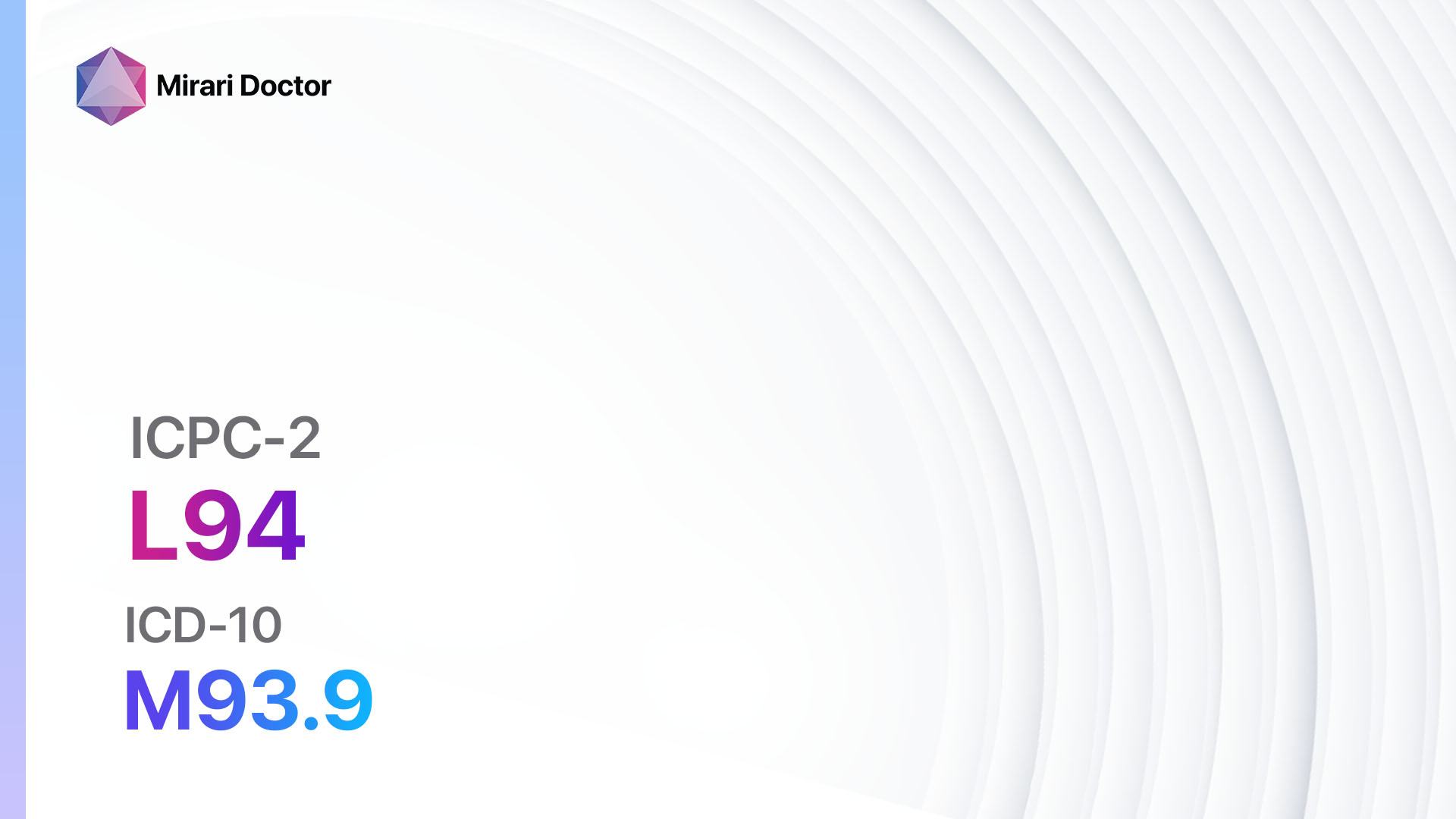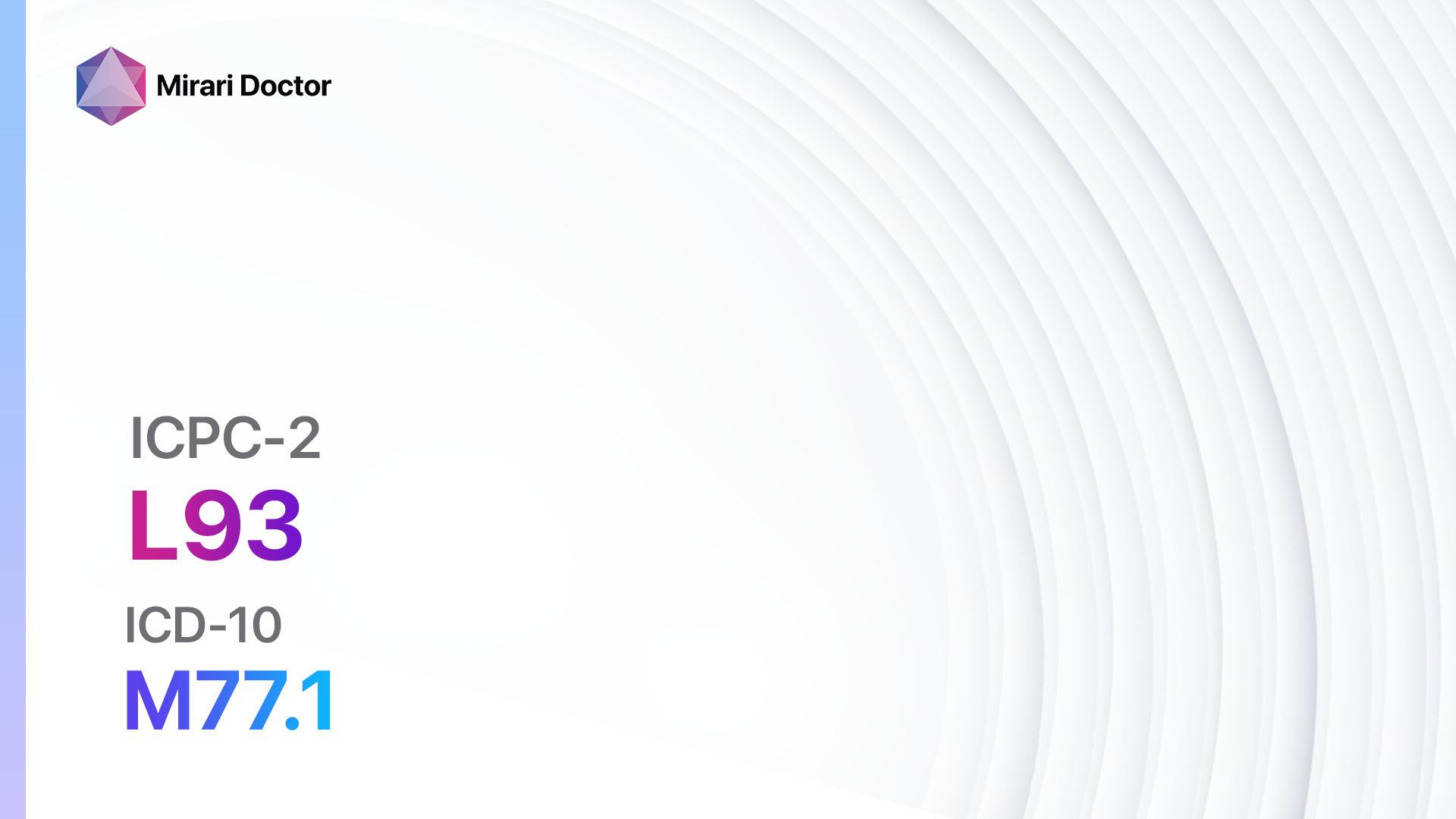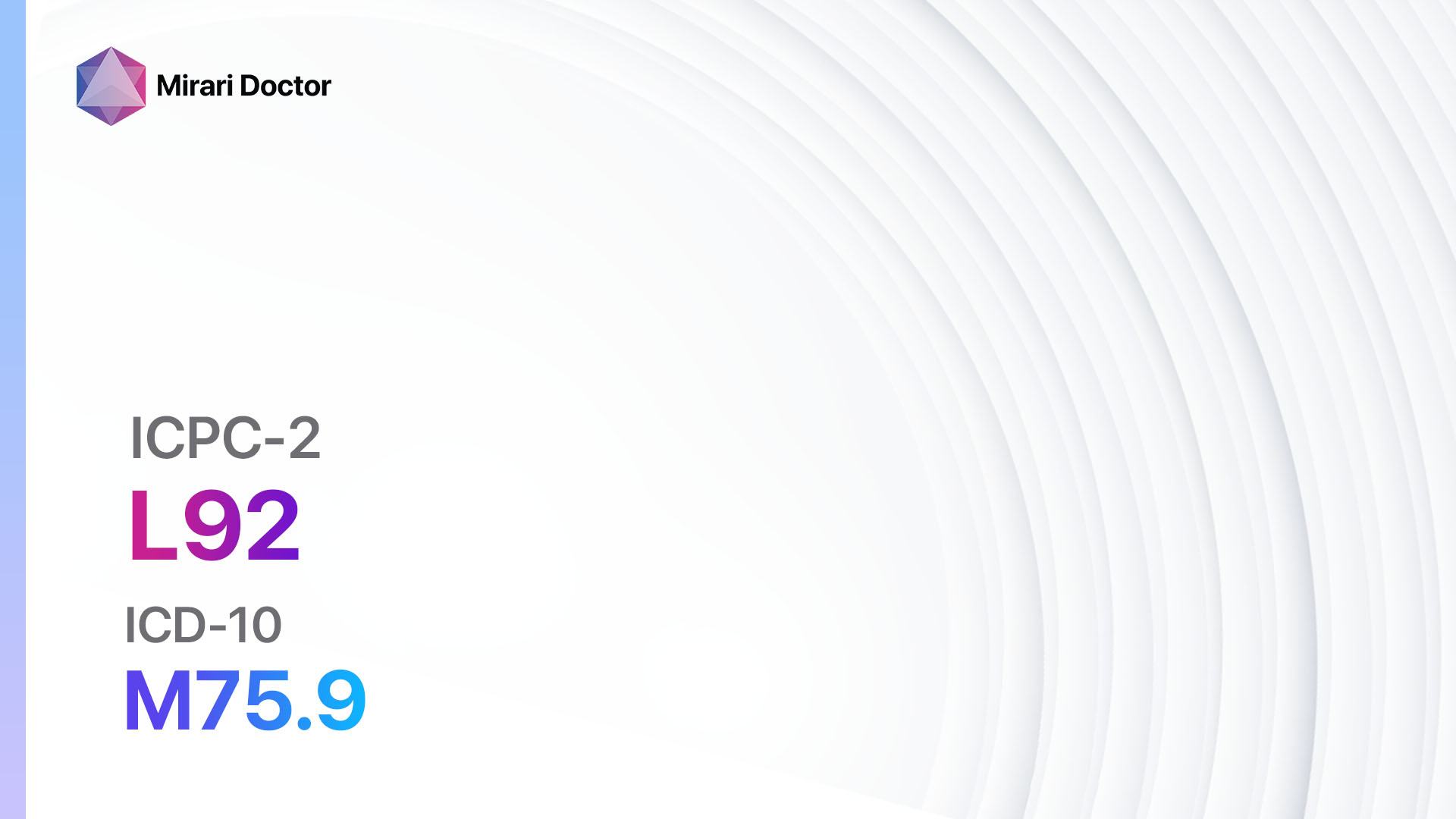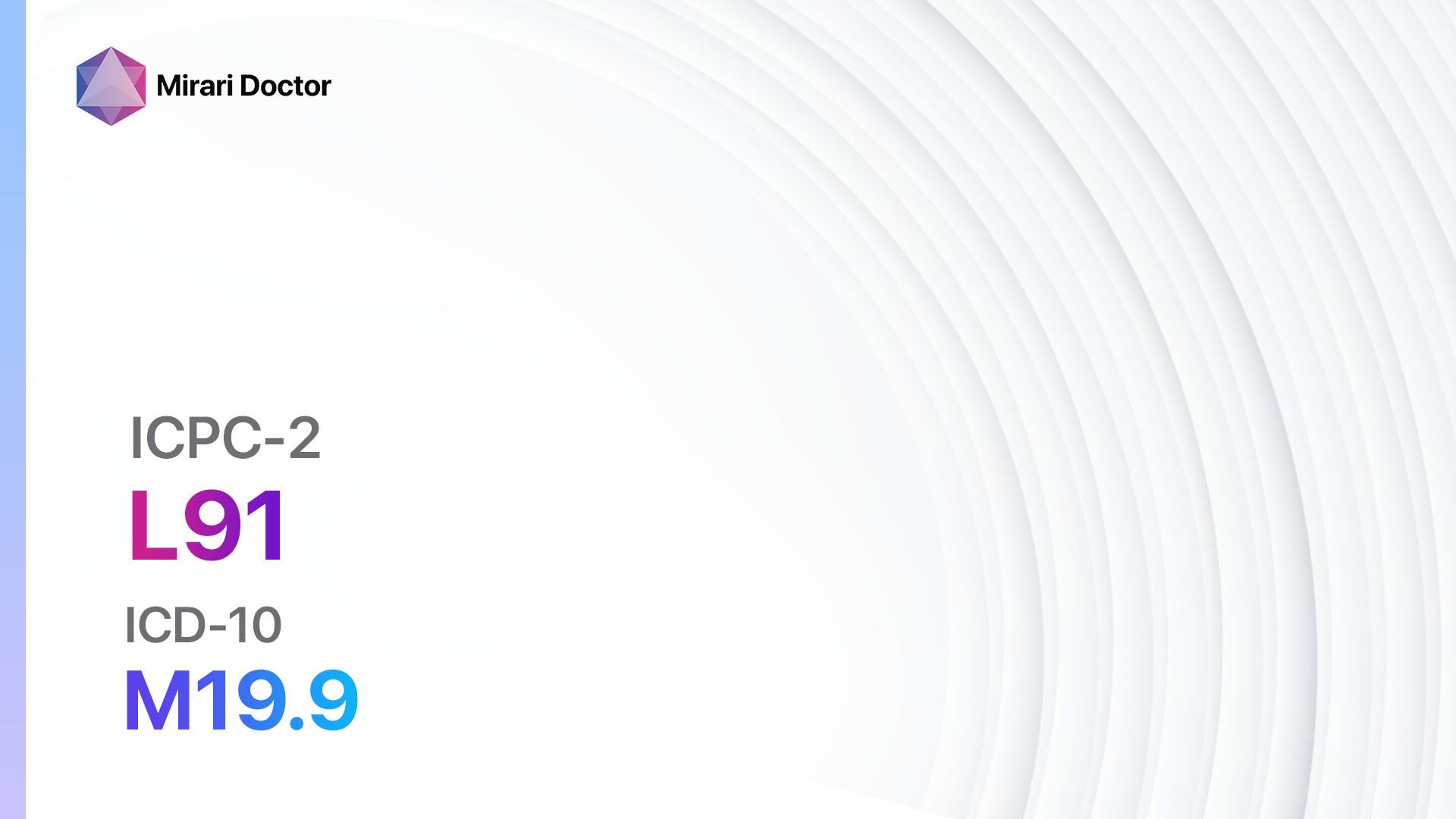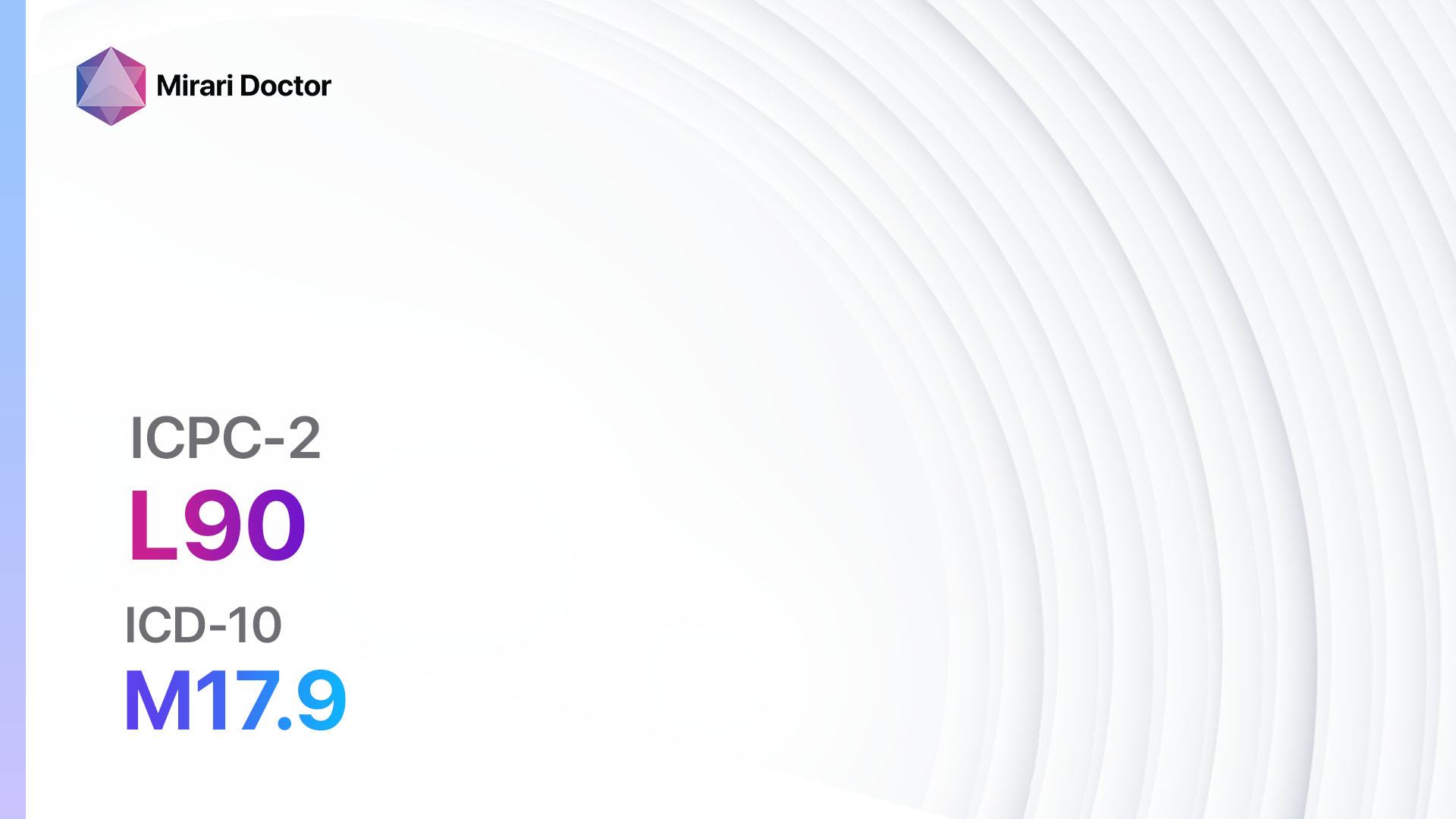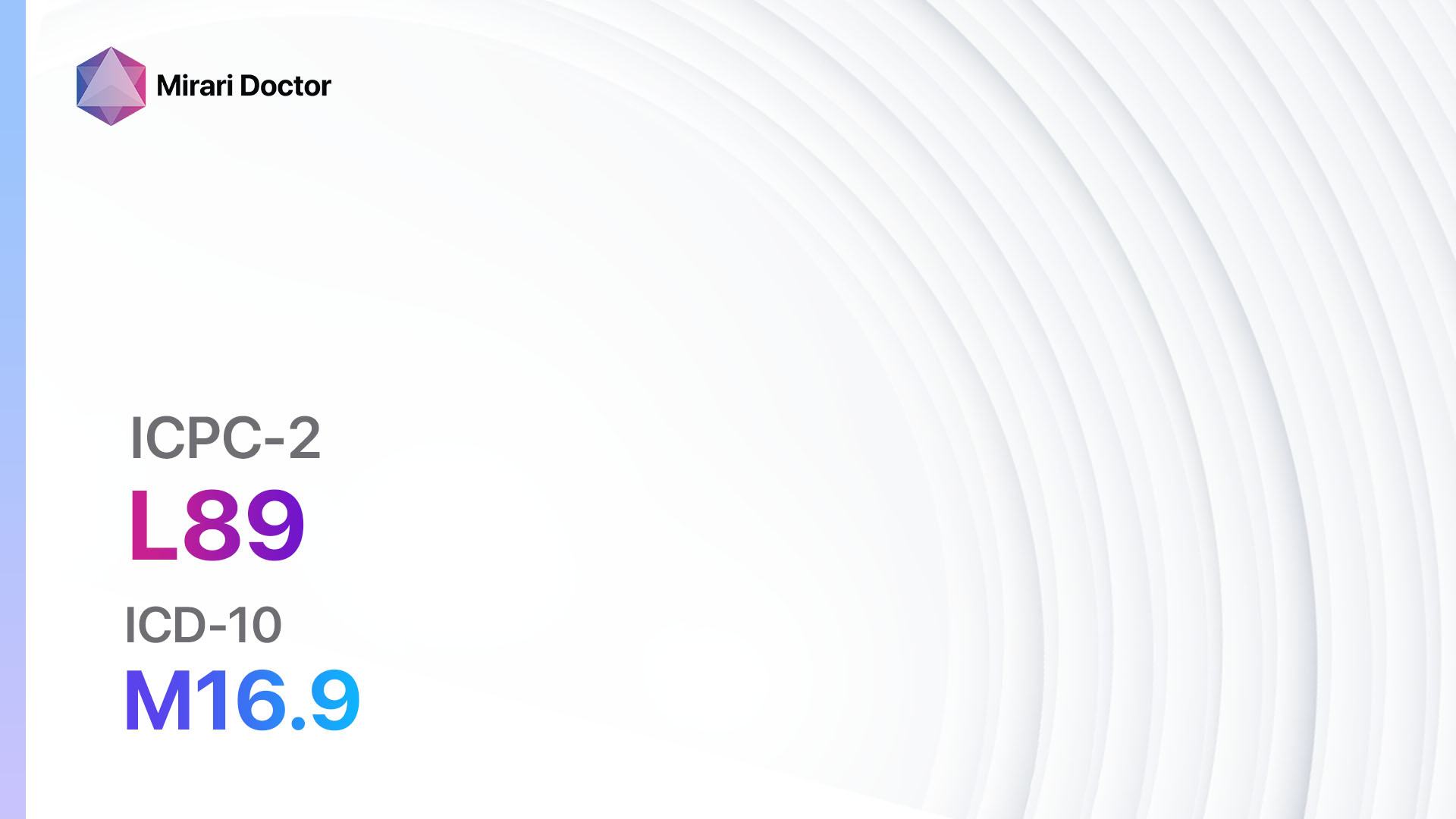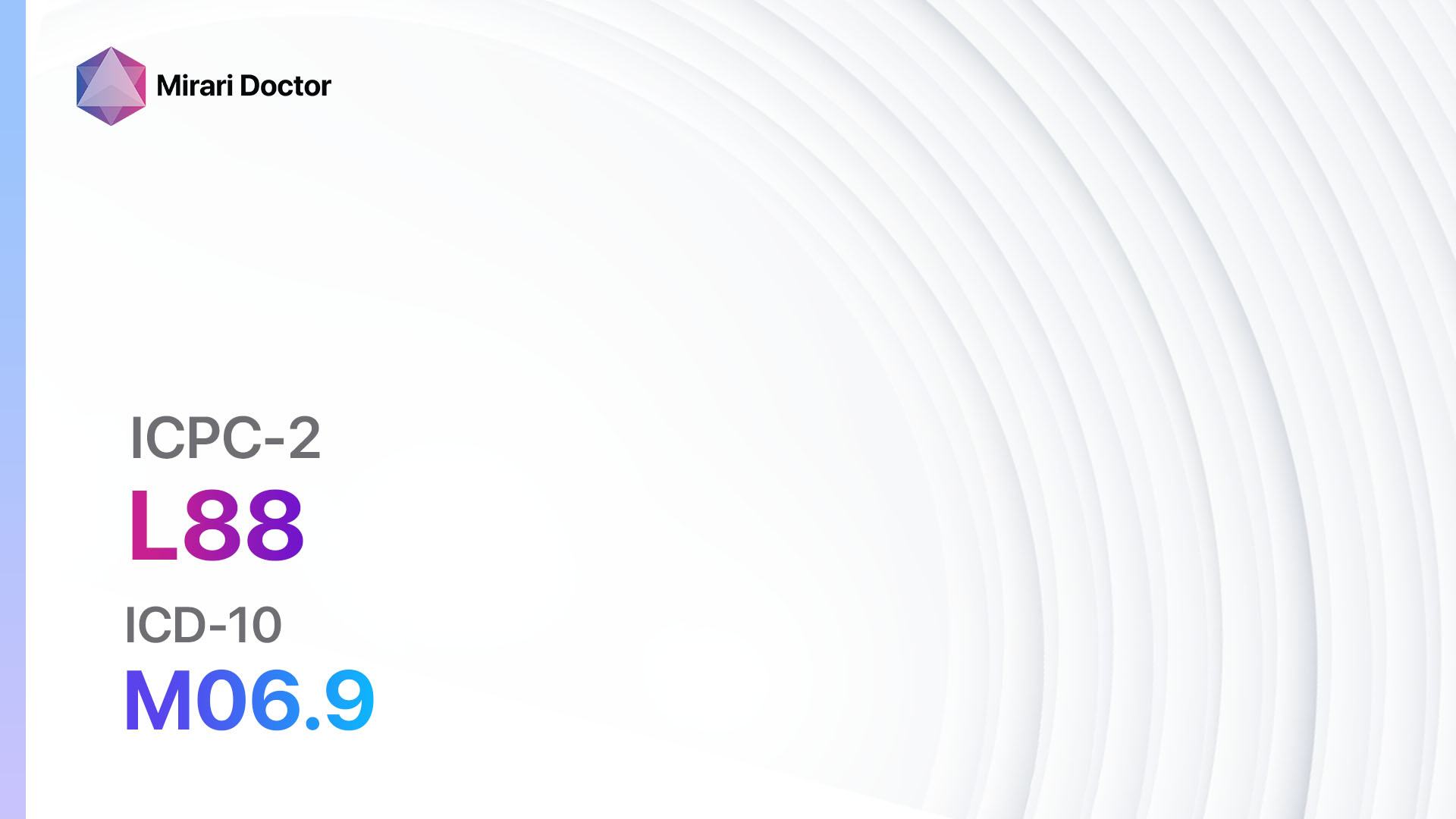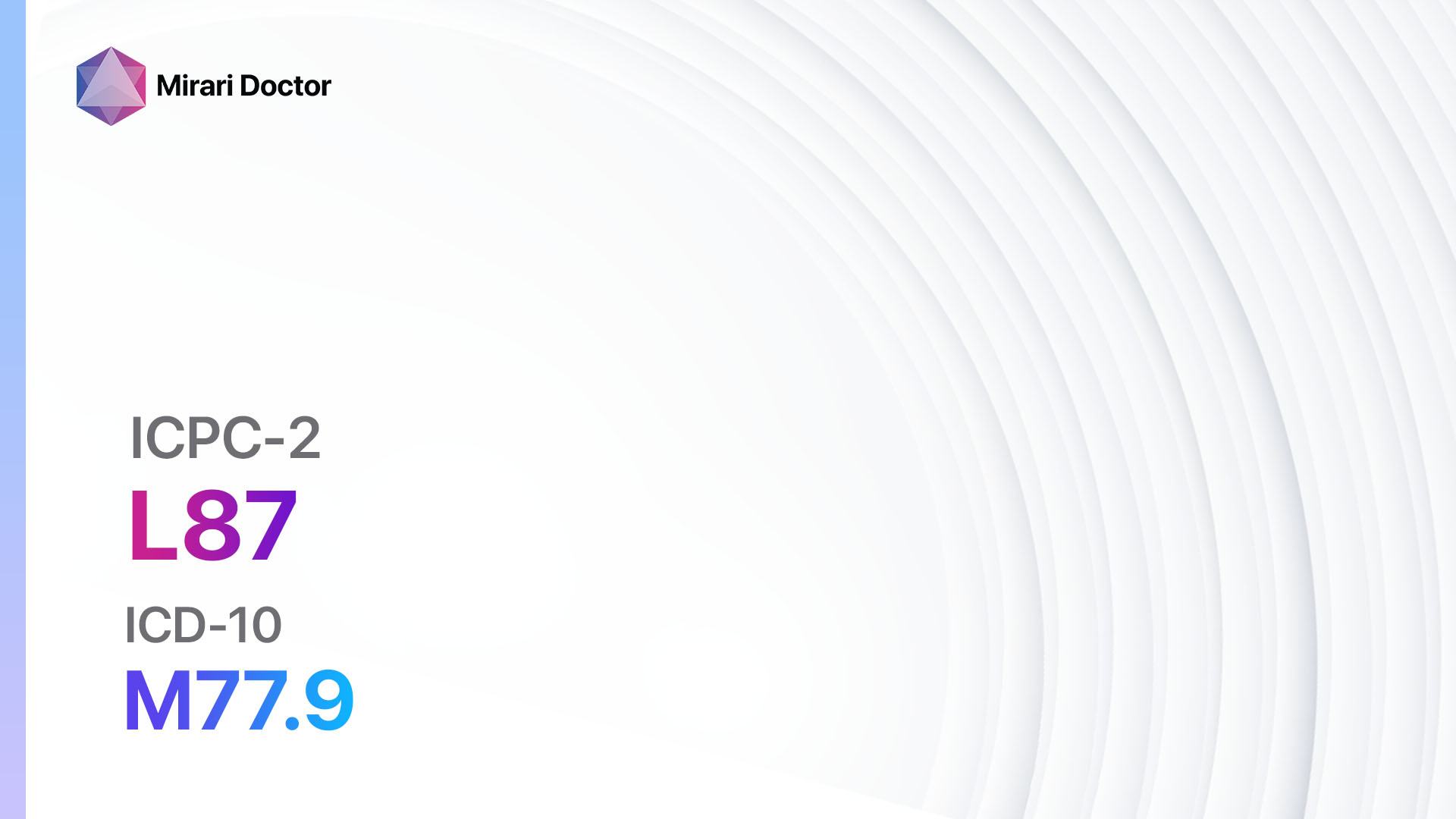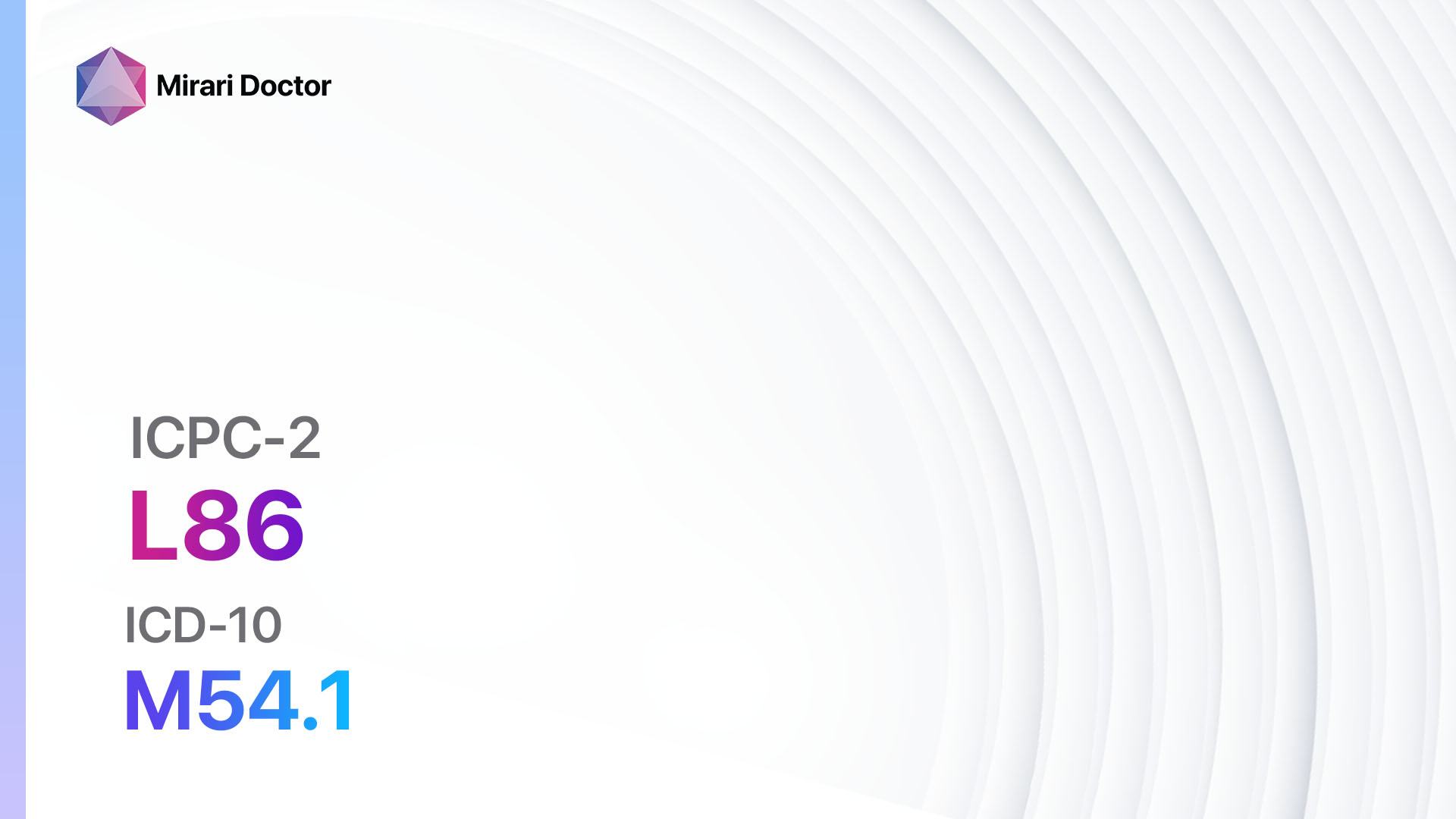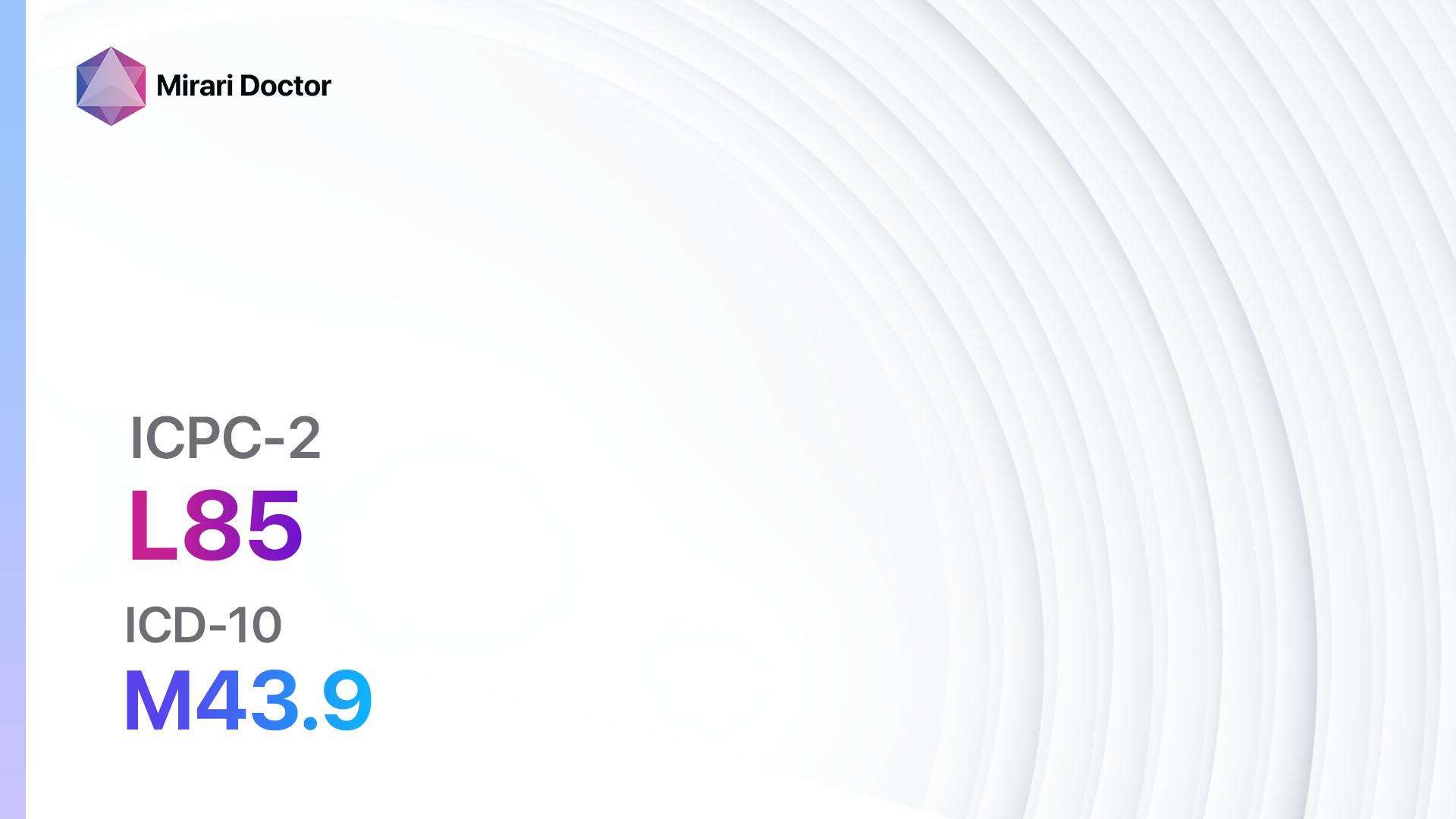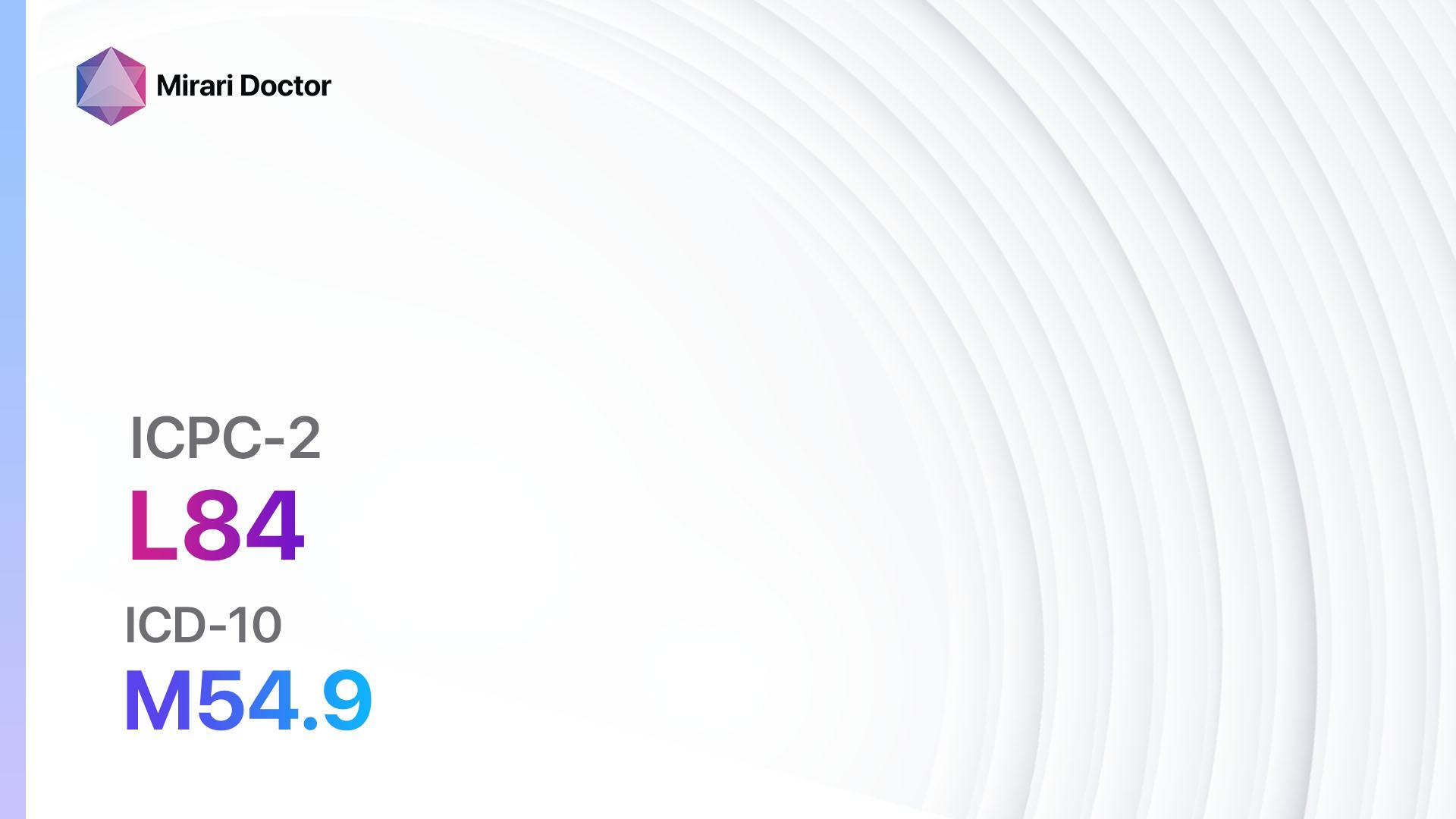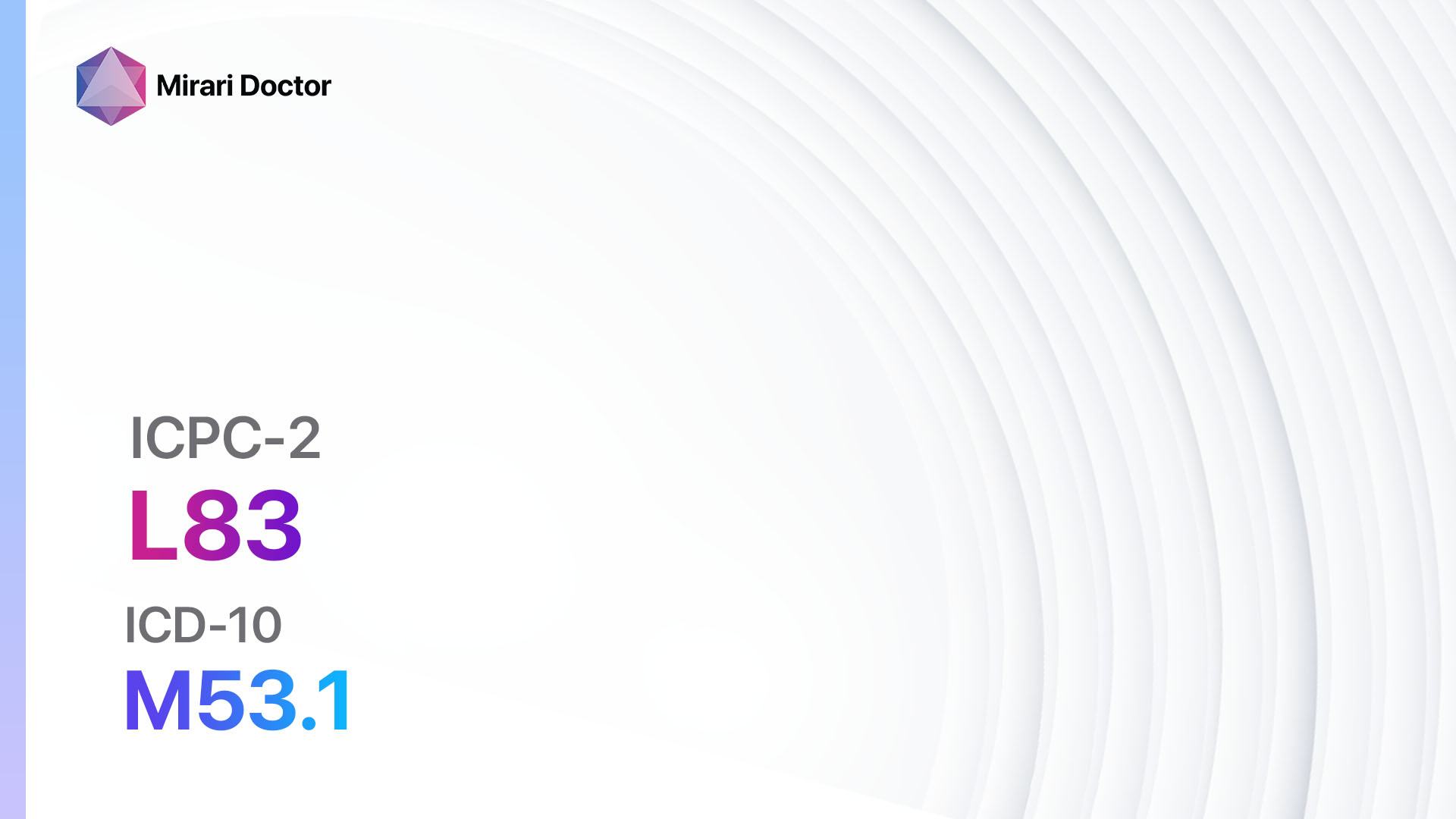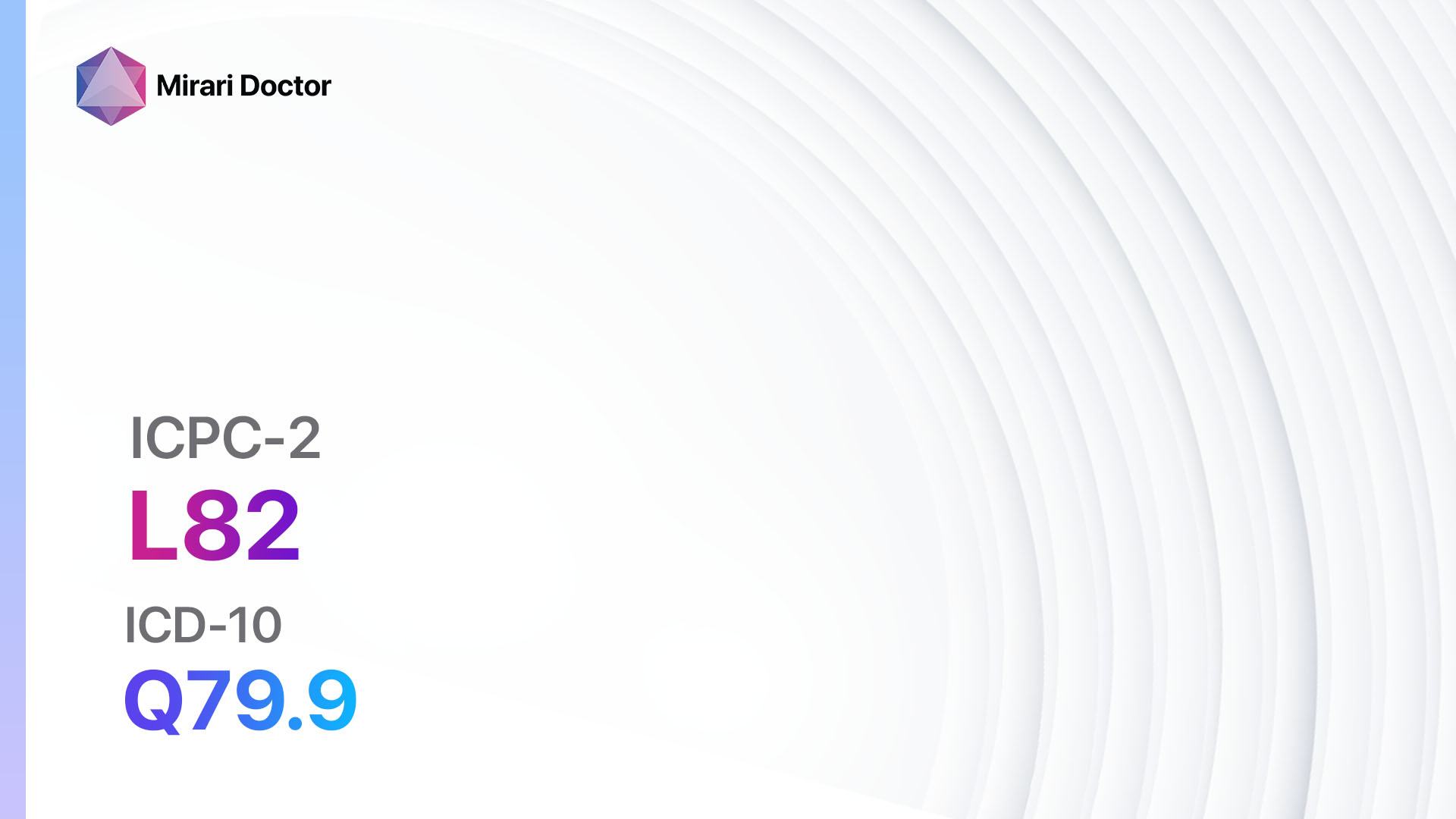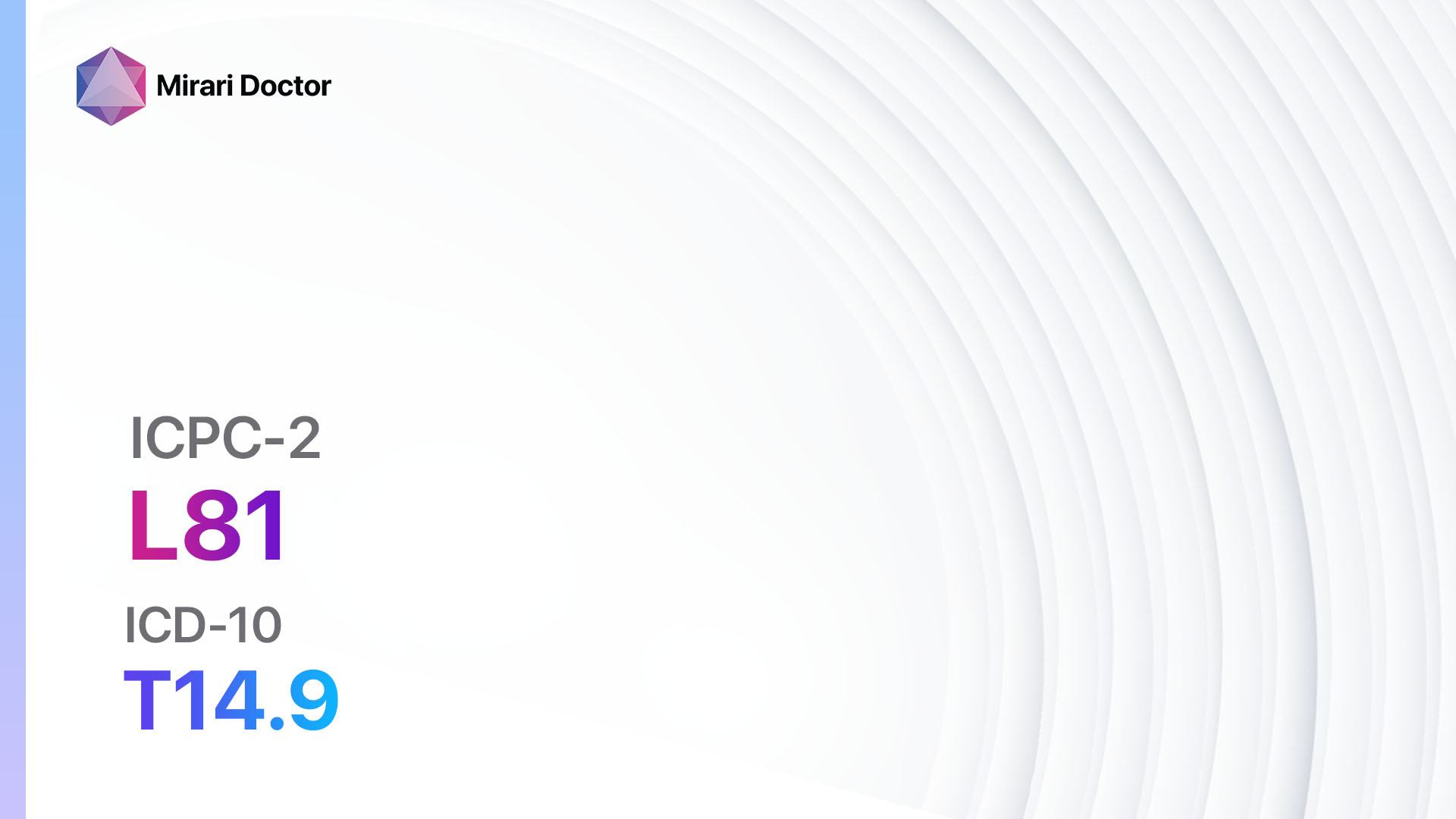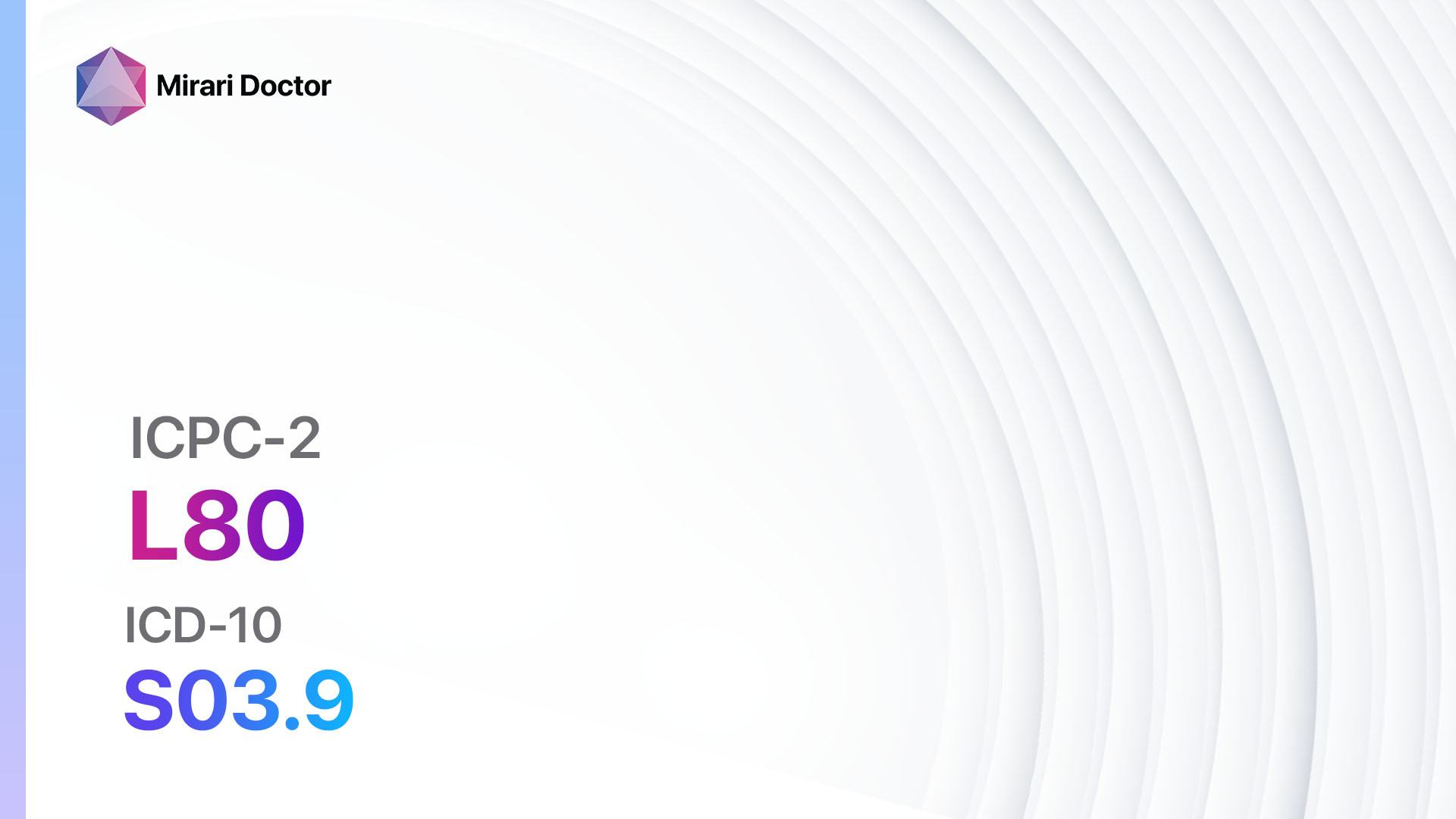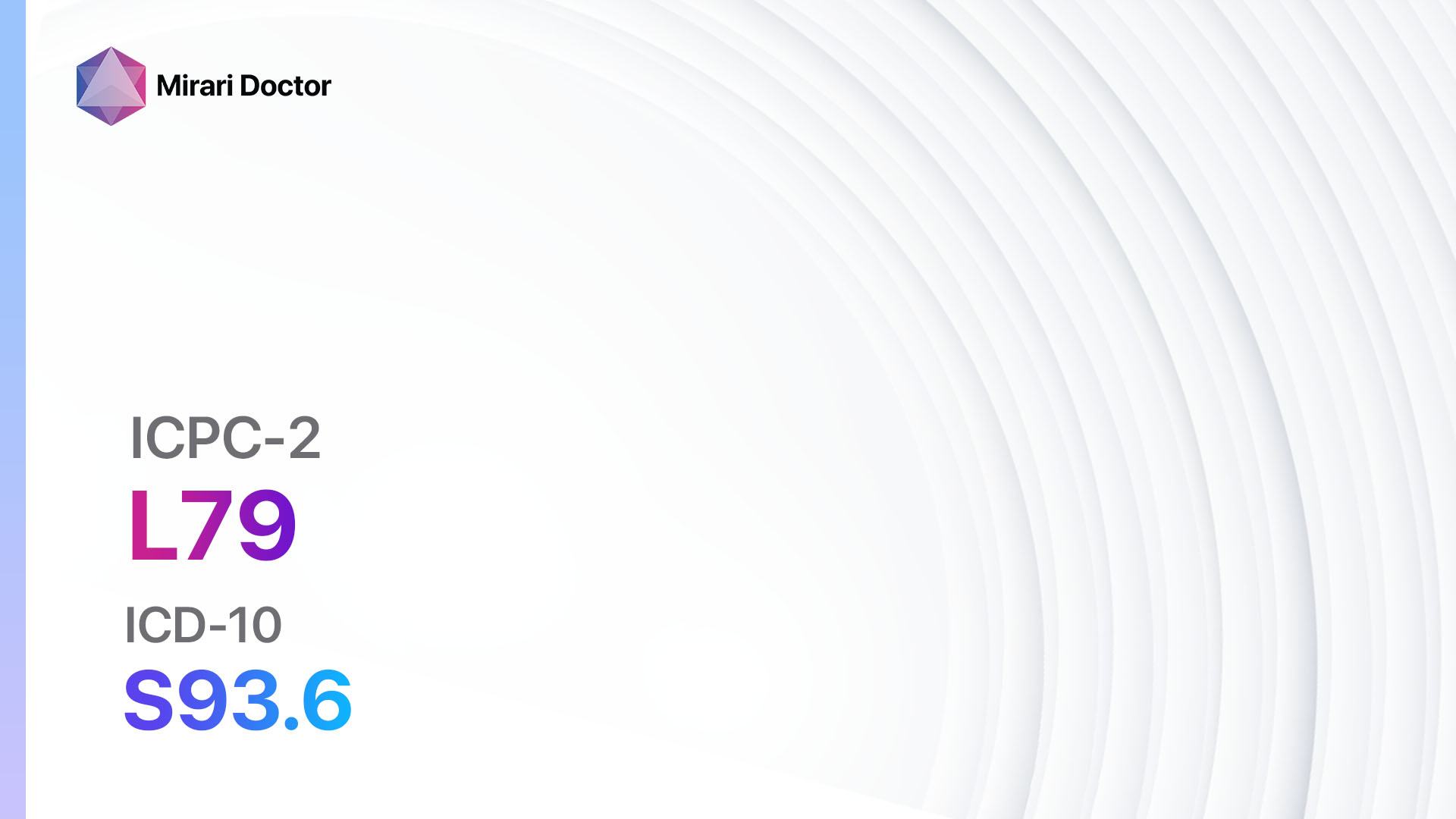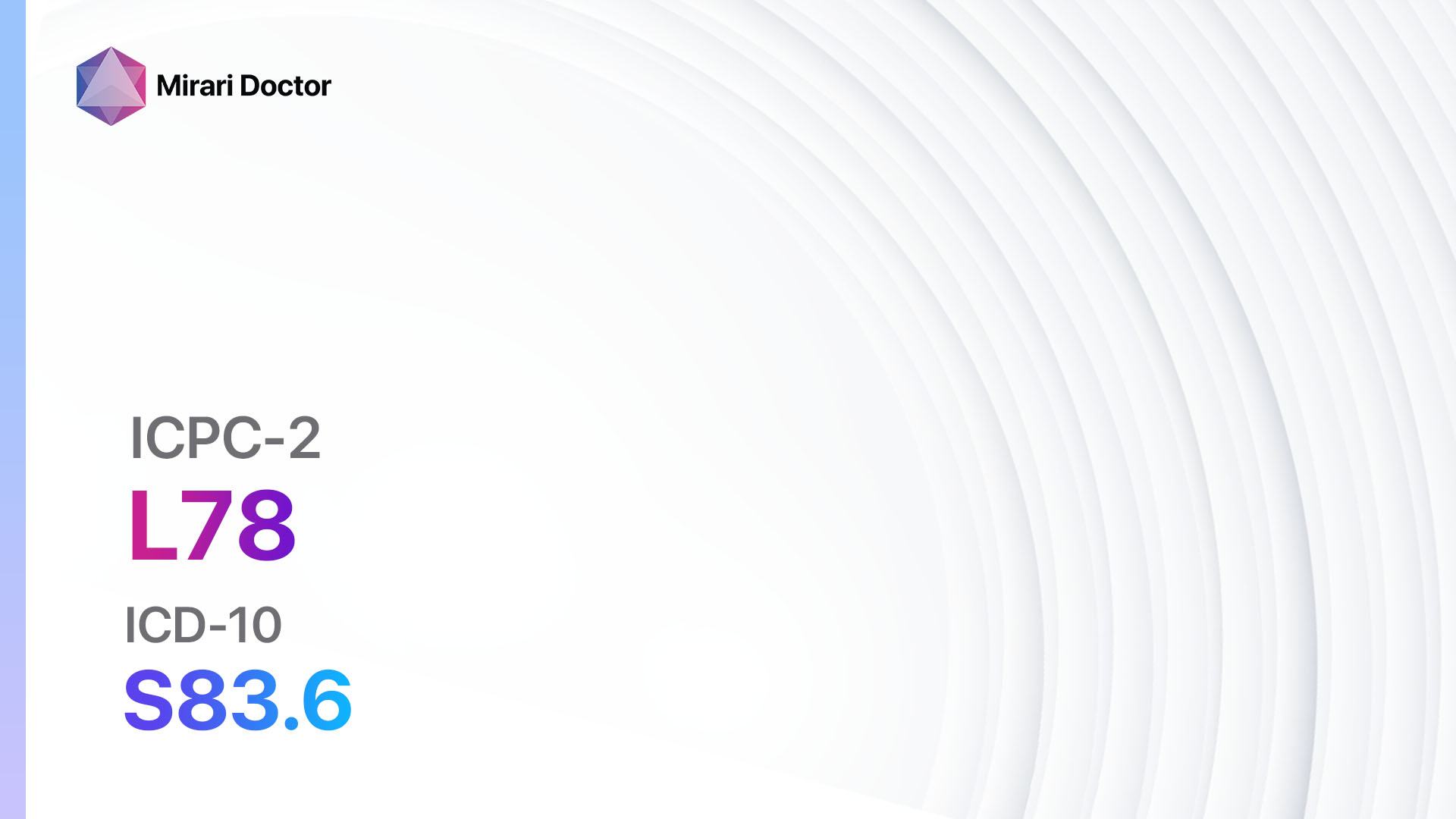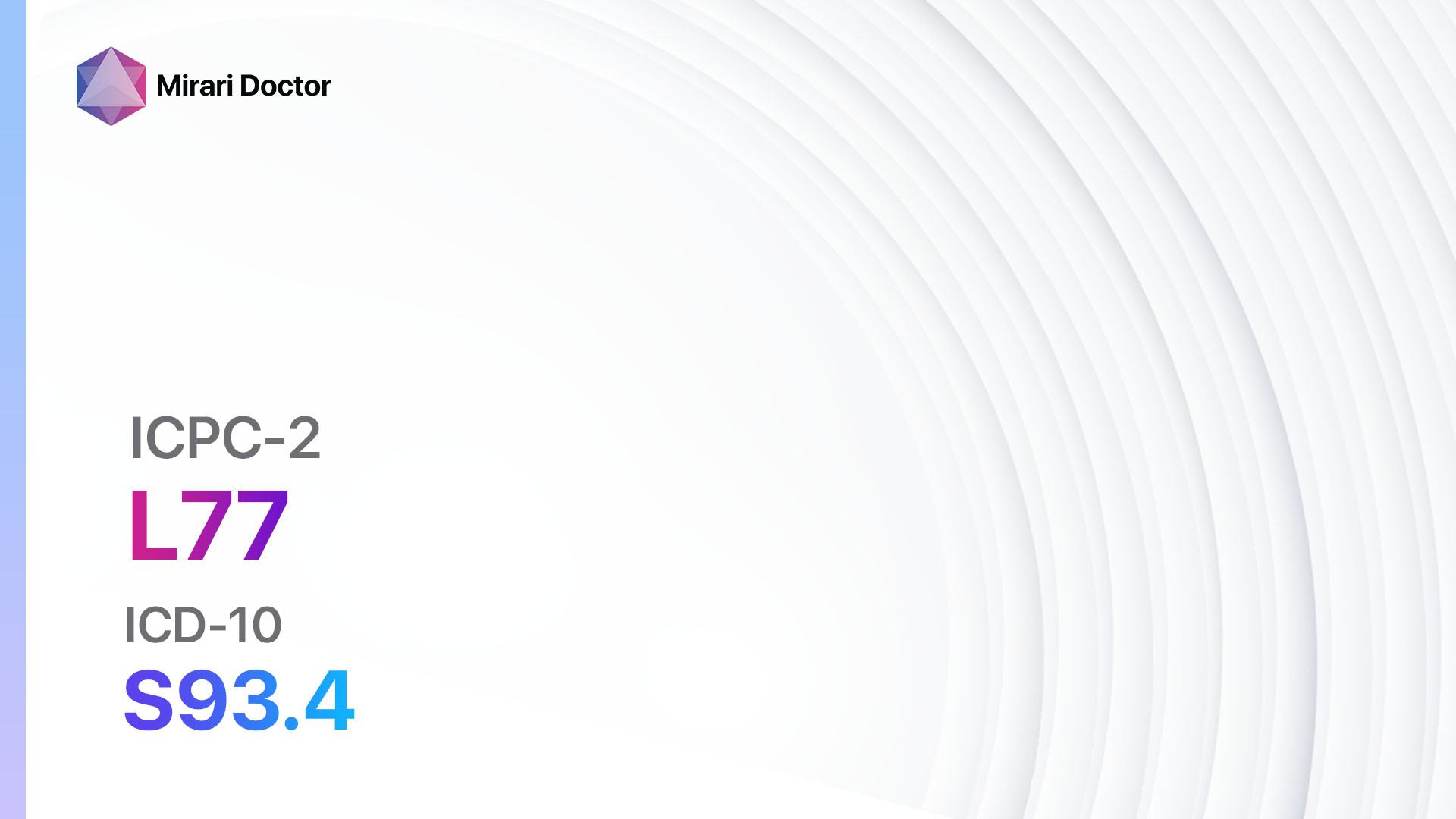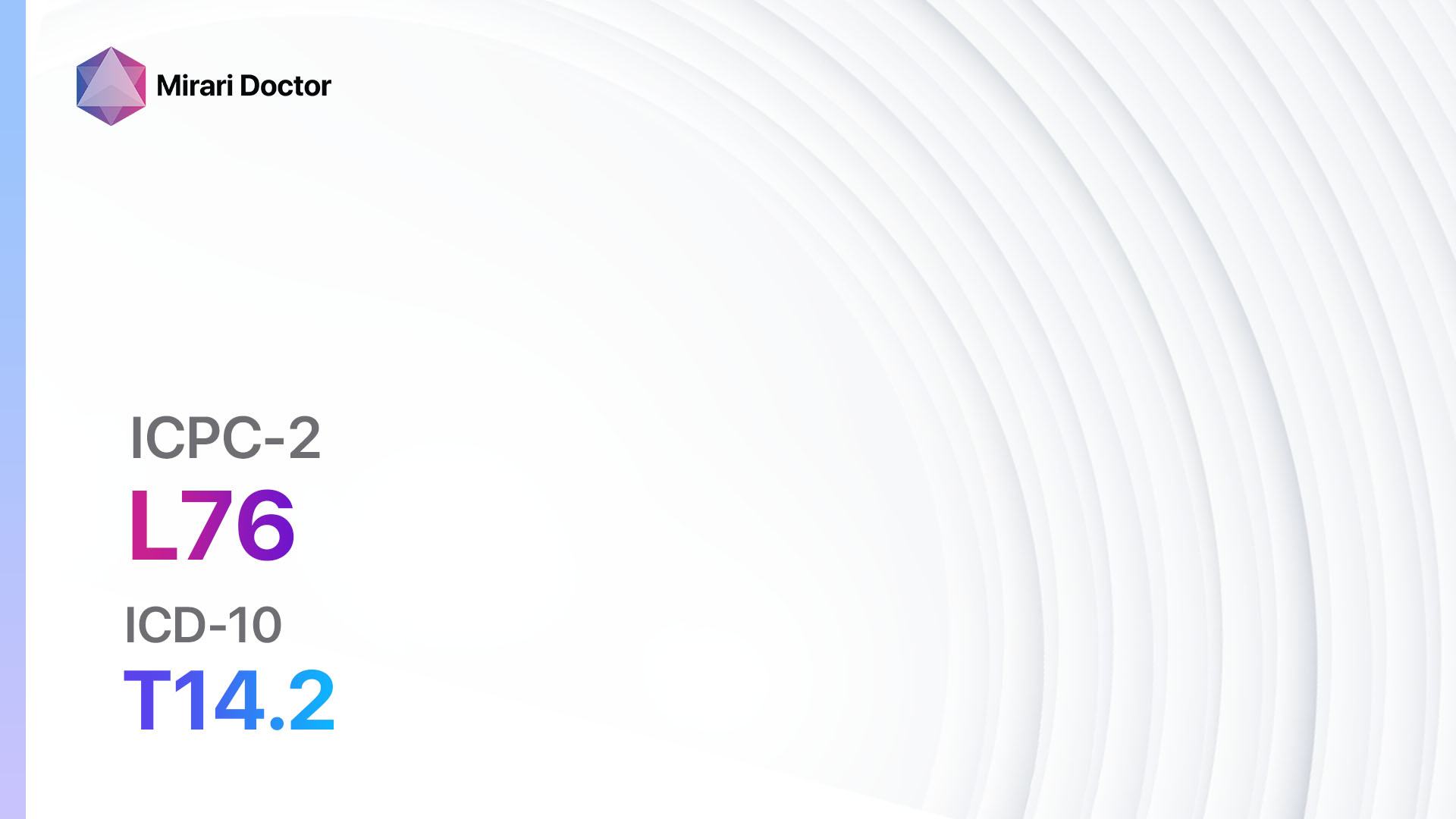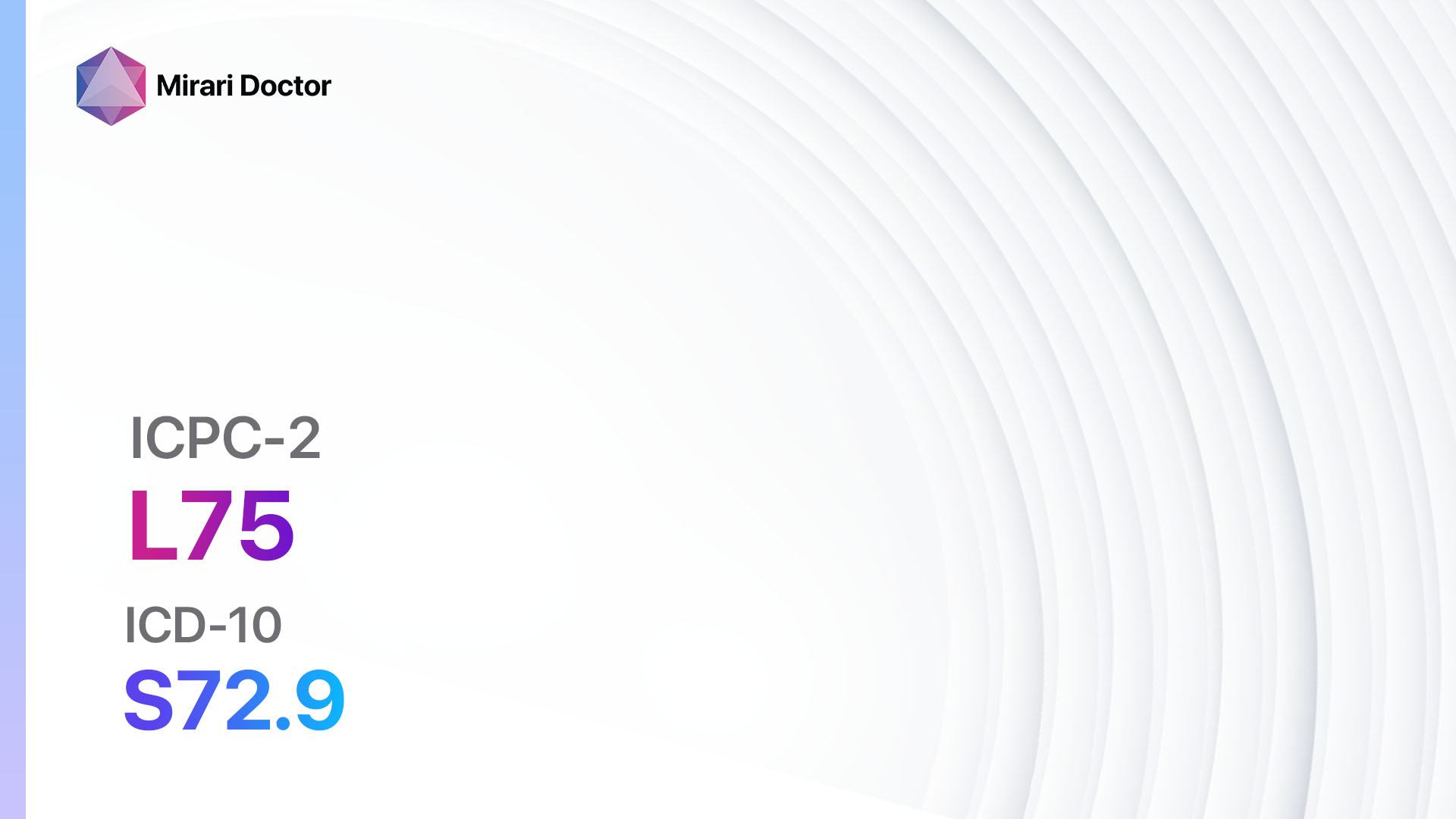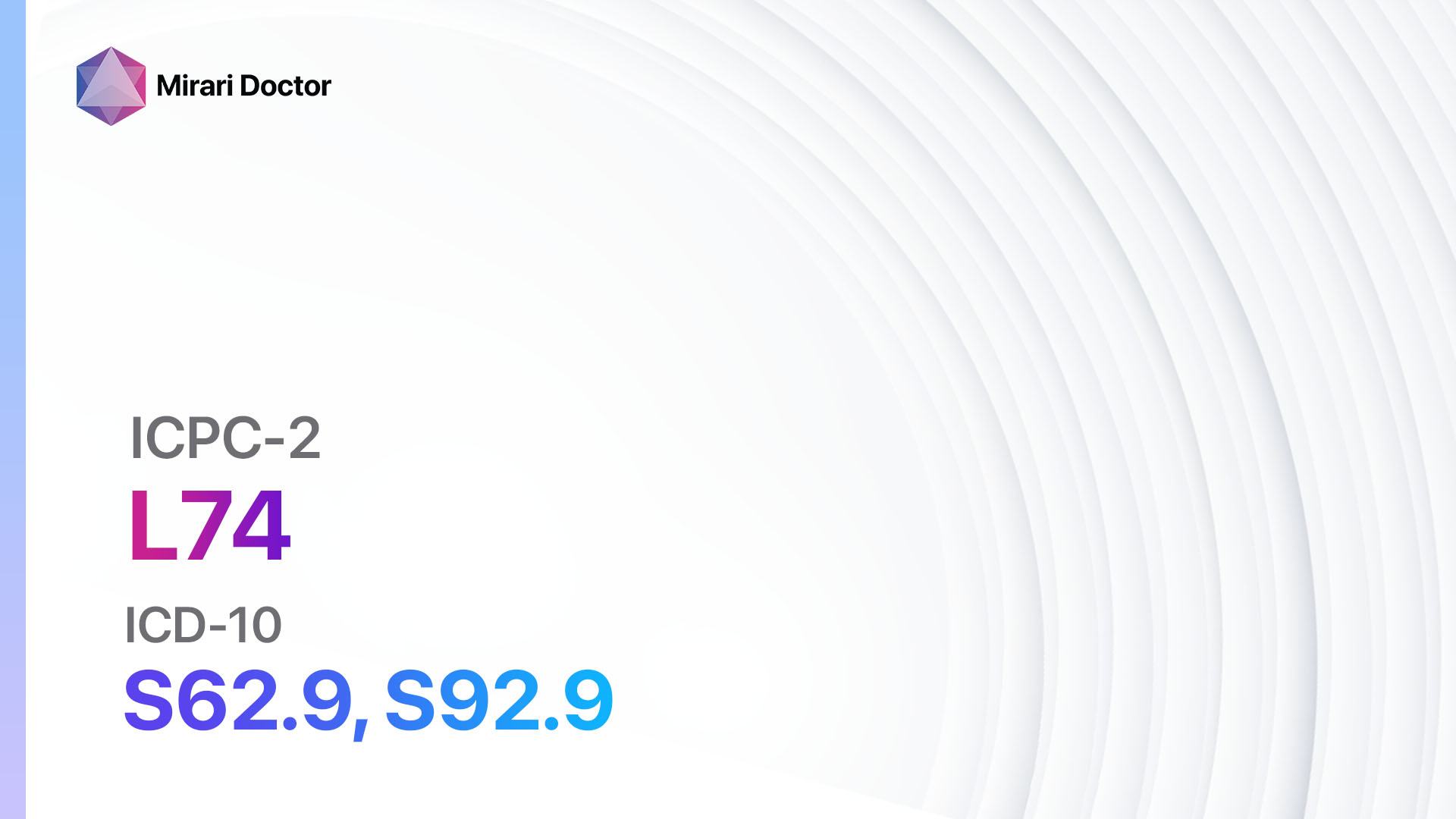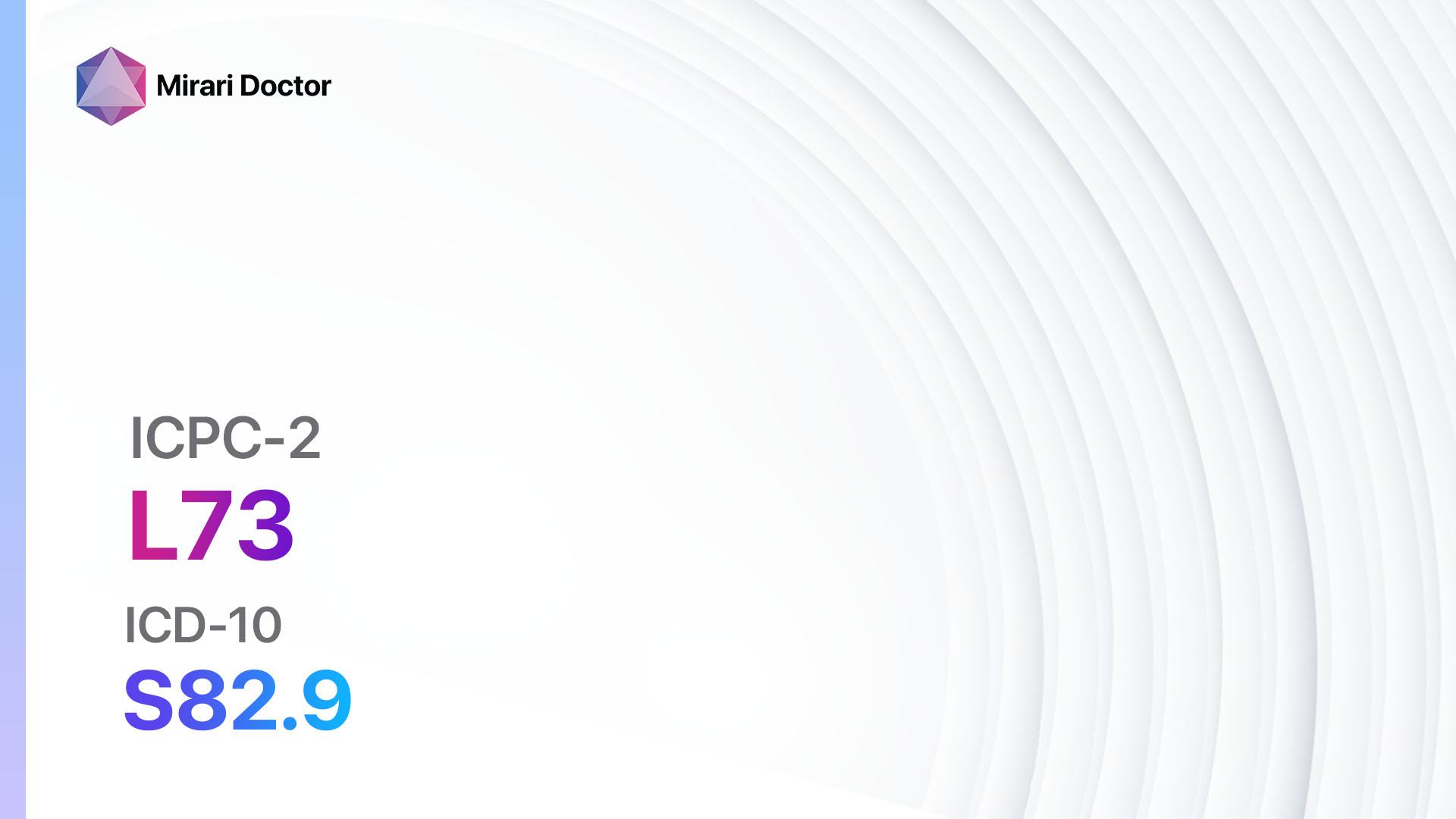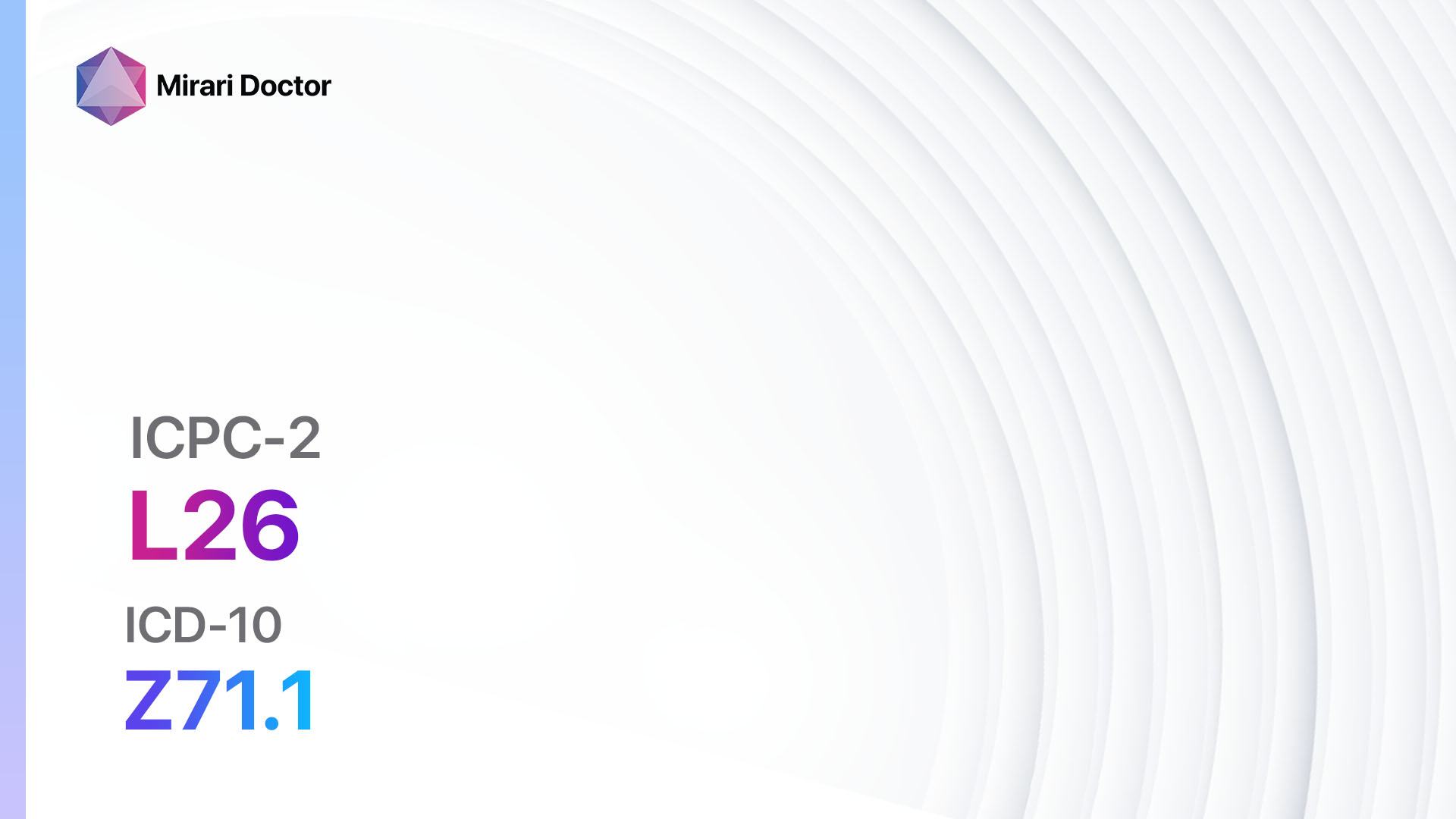
Introduction
Fear of cancer musculoskeletal (ICPC-2: L26) refers to the anxiety or distress experienced by individuals who have concerns or worries about developing cancer in their musculoskeletal system[1]. This fear can be debilitating and may significantly impact a person’s quality of life[2]. The aim of this guide is to provide healthcare professionals with a comprehensive approach to diagnosing and managing fear of cancer musculoskeletal.
Codes
- ICPC-2 Code: L26 Fear of cancer musculoskeletal[3]
- ICD-10 Code: Z71.1 Person with feared complaint in whom no diagnosis is made[4]
Symptoms
- Persistent worry or fear about developing cancer in the musculoskeletal system[5]
- Preoccupation with physical sensations or changes in the musculoskeletal system[6]
- Avoidance of activities or situations that may increase the risk of developing cancer[7]
- Excessive reassurance-seeking behavior from healthcare professionals[8]
- Impairment in daily functioning and quality of life[9]
Causes
- Previous personal or family history of cancer[10]
- Exposure to cancer-related information or media
- Traumatic experiences related to cancer or musculoskeletal conditions
- Pre-existing anxiety or other mental health disorders
- Lack of knowledge or understanding about musculoskeletal health
Diagnostic Steps
Medical History
- Conduct a thorough medical history to gather information about the patient’s personal and family history of cancer, musculoskeletal conditions, and any previous traumatic experiences related to cancer.
- Assess the patient’s level of knowledge and understanding about musculoskeletal health and cancer.
- Identify any risk factors or predisposing factors for developing cancer in the musculoskeletal system.
Physical Examination
- Perform a comprehensive physical examination, focusing on the musculoskeletal system.
- Look for any signs or findings that may indicate the presence of a musculoskeletal condition or cancer.
- Assess the patient’s overall physical health and well-being.
Laboratory Tests
- No specific laboratory tests are indicated for diagnosing fear of cancer musculoskeletal. However, if the patient presents with physical symptoms or findings suggestive of a musculoskeletal condition, appropriate laboratory tests may be ordered to confirm or rule out the presence of a specific condition.
Diagnostic Imaging
- Diagnostic imaging modalities, such as X-rays, ultrasound, CT scans, or MRIs, are not typically used for diagnosing fear of cancer musculoskeletal. However, if the patient presents with physical symptoms or findings suggestive of a musculoskeletal condition, appropriate imaging studies may be ordered to further evaluate the condition.
Other Tests
- No other specific diagnostic tests are indicated for diagnosing fear of cancer musculoskeletal. However, additional tests or procedures may be necessary based on the patient’s clinical presentation and the presence of any specific musculoskeletal conditions.
Follow-up and Patient Education
- Schedule regular follow-up appointments to monitor the patient’s progress and provide ongoing support.
- Provide patient education materials or resources about musculoskeletal health and cancer prevention.
- Offer counseling or referral to a mental health professional if necessary.
Possible Interventions
Traditional Interventions
Medications:
Top 5 drugs for fear of cancer musculoskeletal:
- Selective serotonin reuptake inhibitors (SSRIs) (e.g., Fluoxetine, Sertraline):
- Cost: Generic versions can be $3-$50/month.
- Contraindications: Hypersensitivity to SSRIs, concurrent use of monoamine oxidase inhibitors (MAOIs).
- Side effects: Nausea, headache, insomnia.
- Severe side effects: Serotonin syndrome, suicidal thoughts.
- Drug interactions: MAOIs, other serotonergic drugs.
- Warning: May take several weeks to achieve full therapeutic effect.
- Benzodiazepines (e.g., Diazepam, Lorazepam):
- Cost: Generic versions can be $4-$50/month.
- Contraindications: Acute narrow-angle glaucoma, severe respiratory insufficiency.
- Side effects: Drowsiness, sedation, dizziness.
- Severe side effects: Respiratory depression, dependence.
- Drug interactions: Alcohol, opioids.
- Warning: Potential for abuse and dependence.
- Beta-blockers (e.g., Propranolol, Atenolol):
- Cost: Generic versions can be $4-$30/month.
- Contraindications: Severe bradycardia, heart block.
- Side effects: Fatigue, dizziness, bradycardia.
- Severe side effects: Bronchospasm, heart failure.
- Drug interactions: Calcium channel blockers, insulin.
- Warning: Should not be abruptly stopped.
- Antidepressants (e.g., Amitriptyline, Venlafaxine):
- Cost: Generic versions can be $4-$50/month.
- Contraindications: Hypersensitivity to tricyclic antidepressants, recent myocardial infarction.
- Side effects: Dry mouth, constipation, blurred vision.
- Severe side effects: Cardiac arrhythmias, serotonin syndrome.
- Drug interactions: MAOIs, other serotonergic drugs.
- Warning: May take several weeks to achieve full therapeutic effect.
- Antipsychotics (e.g., Quetiapine, Risperidone):
- Cost: Generic versions can be $10-$100/month.
- Contraindications: Hypersensitivity to antipsychotics, dementia-related psychosis.
- Side effects: Sedation, weight gain, extrapyramidal symptoms.
- Severe side effects: Neuroleptic malignant syndrome, tardive dyskinesia.
- Drug interactions: Other antipsychotics, CNS depressants.
- Warning: Increased risk of mortality in elderly patients with dementia-related psychosis.
Alternative Drugs:
- Cognitive-behavioral therapy (CBT): A form of psychotherapy that focuses on identifying and changing negative thought patterns and behaviors associated with fear of cancer musculoskeletal. Cost: Varies depending on the therapist and location.
- Mindfulness-based stress reduction (MBSR): A meditation-based program that helps individuals develop awareness and acceptance of their thoughts and emotions. Cost: Varies depending on the program and location.
- Support groups: Joining a support group can provide individuals with a sense of community and understanding. Cost: Varies depending on the organization or group.
Surgical Procedures:
- Surgical procedures are not typically indicated for fear of cancer musculoskeletal, as it is a psychological condition rather than a physical one.
Alternative Interventions
- Counseling or psychotherapy: Talk therapy can help individuals explore and address the underlying causes of their fear of cancer musculoskeletal. Cost: Varies depending on the therapist and location.
- Relaxation techniques: Techniques such as deep breathing, progressive muscle relaxation, and guided imagery can help individuals manage anxiety and reduce fear. Cost: Free or low-cost resources available online or through apps.
- Exercise and physical activity: Regular exercise can improve overall well-being and reduce anxiety. Cost: Varies depending on the chosen activity (e.g., gym membership, fitness classes).
- Yoga or meditation: These practices can promote relaxation, mindfulness, and stress reduction. Cost: Varies depending on the location and type of class or program.
- Support from friends and family: Having a strong support system can provide emotional comfort and reassurance. Cost: Free.
Lifestyle Interventions
- Healthy diet: Eating a balanced diet rich in fruits, vegetables, whole grains, and lean proteins can support overall health and well-being. Cost: Varies depending on food choices and dietary preferences.
- Regular physical activity: Engaging in regular exercise or physical activity can improve mood and reduce anxiety. Cost: Varies depending on the chosen activity (e.g., gym membership, fitness classes).
- Stress management techniques: Practicing stress management techniques, such as deep breathing, meditation, or journaling, can help individuals cope with anxiety and fear. Cost: Free or low-cost resources available online or through apps.
- Avoidance of cancer-related media: Limiting exposure to cancer-related information or media that may trigger fear or anxiety. Cost: Free.
- Education and self-care: Learning about musculoskeletal health and cancer prevention can empower individuals to take control of their health and reduce fear. Cost: Varies depending on the chosen educational resources or classes.
It is important to note that the cost ranges provided are approximate and may vary depending on the location and availability of the interventions.
Mirari Cold Plasma Alternative Intervention
Understanding Mirari Cold Plasma
- Safe and Non-Invasive Treatment: Mirari Cold Plasma is a safe and non-invasive treatment option for various skin conditions. It does not require incisions, minimizing the risk of scarring, bleeding, or tissue damage.
- Efficient Extraction of Foreign Bodies: Mirari Cold Plasma facilitates the removal of foreign bodies from the skin by degrading and dissociating organic matter, allowing easier access and extraction.
- Pain Reduction and Comfort: Mirari Cold Plasma has a local analgesic effect, providing pain relief during the treatment, making it more comfortable for the patient.
- Reduced Risk of Infection: Mirari Cold Plasma has antimicrobial properties, effectively killing bacteria and reducing the risk of infection.
- Accelerated Healing and Minimal Scarring: Mirari Cold Plasma stimulates wound healing and tissue regeneration, reducing healing time and minimizing the formation of scars.
Mirari Cold Plasma Prescription
Video instructions for using Mirari Cold Plasma Device – L26 Fear of cancer musculoskeletal (ICD-10:Z71.1)
| Mild | Moderate | Severe |
| Mode setting: 2 (Wound Healing) Location: 0 (Localized) Morning: 15 minutes, Evening: 15 minutes |
Mode setting: 2 (Wound Healing) Location: 0 (Localized) Morning: 30 minutes, Lunch: 30 minutes, Evening: 30 minutes |
Mode setting: 2 (Wound Healing) Location: 0 (Localized) Morning: 30 minutes, Lunch: 30 minutes, Evening: 30 minutes |
| Mode setting: 9 (Arthritis) Location: 0 (Localized) Morning: 15 minutes, Evening: 15 minutes |
Mode setting: 9 (Arthritis) Location: 0 (Localized) Morning: 30 minutes, Lunch: 30 minutes, Evening: 30 minutes |
Mode setting: 9 (Arthritis) Location: 0 (Localized) Morning: 30 minutes, Lunch: 30 minutes, Evening: 30 minutes |
| Mode setting: 7 (Immunotherapy) Location: 1 (Sacrum) Morning: 15 minutes, Evening: 15 minutes |
Mode setting: 7 (Immunotherapy) Location: 1 (Sacrum) Morning: 30 minutes, Lunch: 30 minutes, Evening: 30 minutes |
Mode setting: 7 (Immunotherapy) Location: 1 (Sacrum) Morning: 30 minutes, Lunch: 30 minutes, Evening: 30 minutes |
| Total Morning: 45 minutes approx. $7.50 USD, Evening: 45 minutes approx. $7.50 USD |
Total Morning: 90 minutes approx. $15 USD, Lunch: 90 minutes approx. $15 USD, Evening: 90 minutes approx. $15 USD, |
Total Morning: 90 minutes approx. $15 USD, Lunch: 90 minutes approx. $15 USD, Evening: 90 minutes approx. $15 USD, |
| Usual treatment for 7-60 days approx. $105 USD – $900 USD | Usual treatment for 6-8 weeks approx. $1,890 USD – $2,520 USD |
Usual treatment for 3-6 months approx. $4,050 USD – $8,100 USD
|
 |
|
Use the Mirari Cold Plasma device to treat Fear of cancer musculoskeletal effectively.
WARNING: MIRARI COLD PLASMA IS DESIGNED FOR THE HUMAN BODY WITHOUT ANY ARTIFICIAL OR THIRD PARTY PRODUCTS. USE OF OTHER PRODUCTS IN COMBINATION WITH MIRARI COLD PLASMA MAY CAUSE UNPREDICTABLE EFFECTS, HARM OR INJURY. PLEASE CONSULT A MEDICAL PROFESSIONAL BEFORE COMBINING ANY OTHER PRODUCTS WITH USE OF MIRARI.
Step 1: Cleanse the Skin
- Start by cleaning the affected area of the skin with a gentle cleanser or mild soap and water. Gently pat the area dry with a clean towel.
Step 2: Prepare the Mirari Cold Plasma device
- Ensure that the Mirari Cold Plasma device is fully charged or has fresh batteries as per the manufacturer’s instructions. Make sure the device is clean and in good working condition.
- Switch on the Mirari device using the power button or by following the specific instructions provided with the device.
- Some Mirari devices may have adjustable settings for intensity or treatment duration. Follow the manufacturer’s instructions to select the appropriate settings based on your needs and the recommended guidelines.
Step 3: Apply the Device
- Place the Mirari device in direct contact with the affected area of the skin. Gently glide or hold the device over the skin surface, ensuring even coverage of the area experiencing.
- Slowly move the Mirari device in a circular motion or follow a specific pattern as indicated in the user manual. This helps ensure thorough treatment coverage.
Step 4: Monitor and Assess:
- Keep track of your progress and evaluate the effectiveness of the Mirari device in managing your Fear of cancer musculoskeletal. If you have any concerns or notice any adverse reactions, consult with your health care professional.
Note
This guide is for informational purposes only and should not replace the advice of a medical professional. Always consult with your healthcare provider or a qualified medical professional for personal advice, diagnosis, or treatment. Do not solely rely on the information presented here for decisions about your health. Use of this information is at your own risk. The authors of this guide, nor any associated entities or platforms, are not responsible for any potential adverse effects or outcomes based on the content.
Mirari Cold Plasma System Disclaimer
- Purpose: The Mirari Cold Plasma System is a Class 2 medical device designed for use by trained healthcare professionals. It is registered for use in Thailand and Vietnam. It is not intended for use outside of these locations.
- Informational Use: The content and information provided with the device are for educational and informational purposes only. They are not a substitute for professional medical advice or care.
- Variable Outcomes: While the device is approved for specific uses, individual outcomes can differ. We do not assert or guarantee specific medical outcomes.
- Consultation: Prior to utilizing the device or making decisions based on its content, it is essential to consult with a Certified Mirari Tele-Therapist and your medical healthcare provider regarding specific protocols.
- Liability: By using this device, users are acknowledging and accepting all potential risks. Neither the manufacturer nor the distributor will be held accountable for any adverse reactions, injuries, or damages stemming from its use.
- Geographical Availability: This device has received approval for designated purposes by the Thai and Vietnam FDA. As of now, outside of Thailand and Vietnam, the Mirari Cold Plasma System is not available for purchase or use.
References
- Herschbach P, Book K, Dinkel A, et al. Evaluation of two group therapies to reduce fear of progression in cancer patients. Support Care Cancer. 2010;18(4):471-479.
- Simard S, Thewes B, Humphris G, et al. Fear of cancer recurrence in adult cancer survivors: a systematic review of quantitative studies. J Cancer Surviv. 2013;7(3):300-322.
- ICPC-2: International Classification of Primary Care, Second edition. Oxford: Oxford University Press; 1998.
- ICD-10: international statistical classification of diseases and related health problems: tenth revision, 2nd ed. World Health Organization. 2004.
- Mehnert A, Herschbach P, Berg P, Henrich G, Koch U. Fear of progression in breast cancer patients–validation of the short form of the Fear of Progression Questionnaire (FoP-Q-SF). Z Psychosom Med Psychother. 2006;52(3):274-288.
- Herschbach P, Berg P, Dankert A, et al. Fear of progression in chronic diseases: psychometric properties of the Fear of Progression Questionnaire. J Psychosom Res. 2005;58(6):505-511.
- Lebel S, Ozakinci G, Humphris G, et al. From normal response to clinical problem: definition and clinical features of fear of cancer recurrence. Support Care Cancer. 2016;24(8):3265-3268.
- Thewes B, Butow P, Zachariae R, et al. Fear of cancer recurrence: a systematic literature review of self-report measures. Psychooncology. 2012;21(6):571-587.
- Koch L, Jansen L, Brenner H, Arndt V. Fear of recurrence and disease progression in long-term (≥ 5 years) cancer survivors–a systematic review of quantitative studies. Psychooncology. 2013;22(1):1-11.
- Mellon S, Kershaw TS, Northouse LL, Freeman-Gibb L. A family-based model to predict fear of recurrence for cancer survivors and their caregivers. Psychooncology. 2007;16(3):214-223.
Related articles
Made in USA


